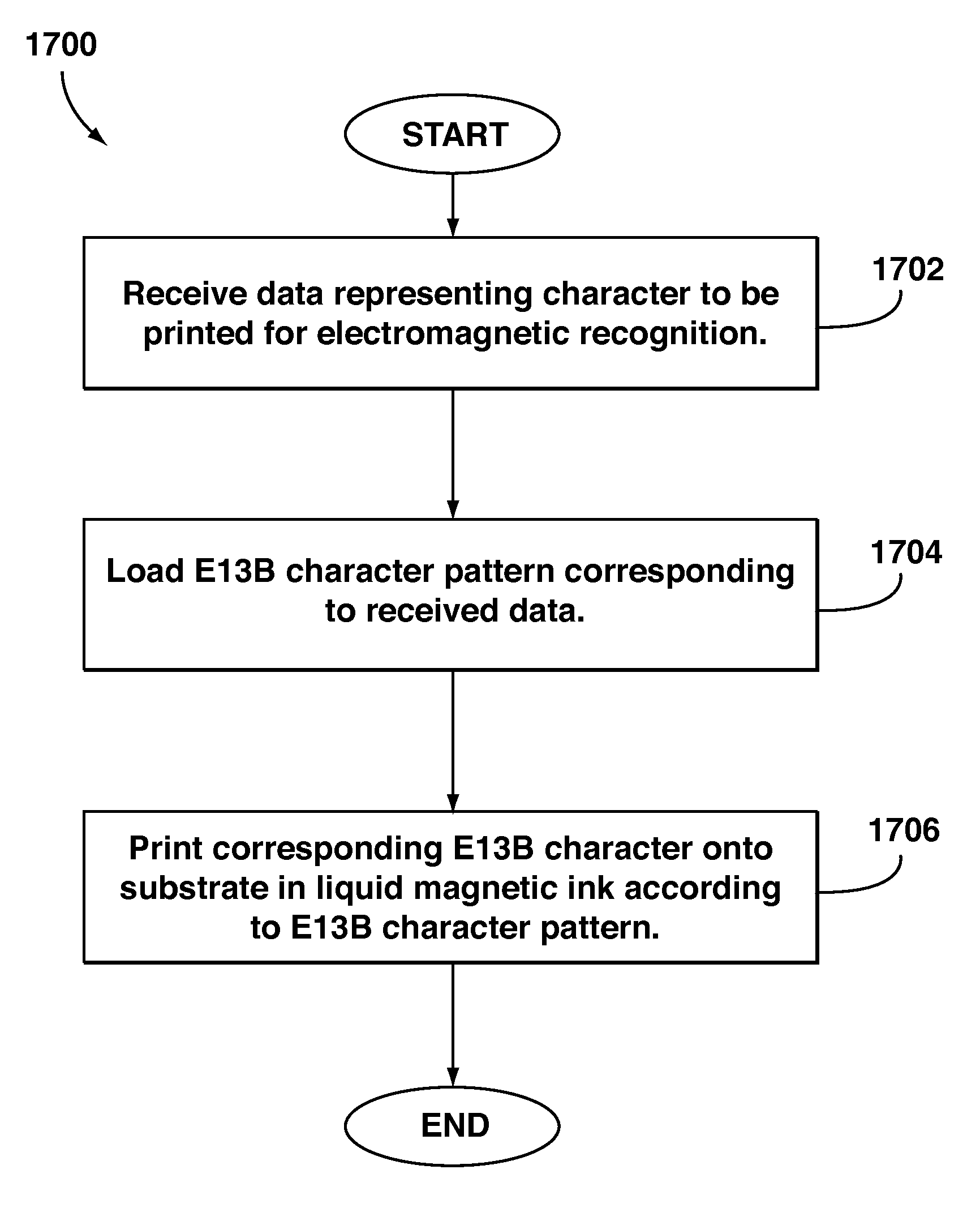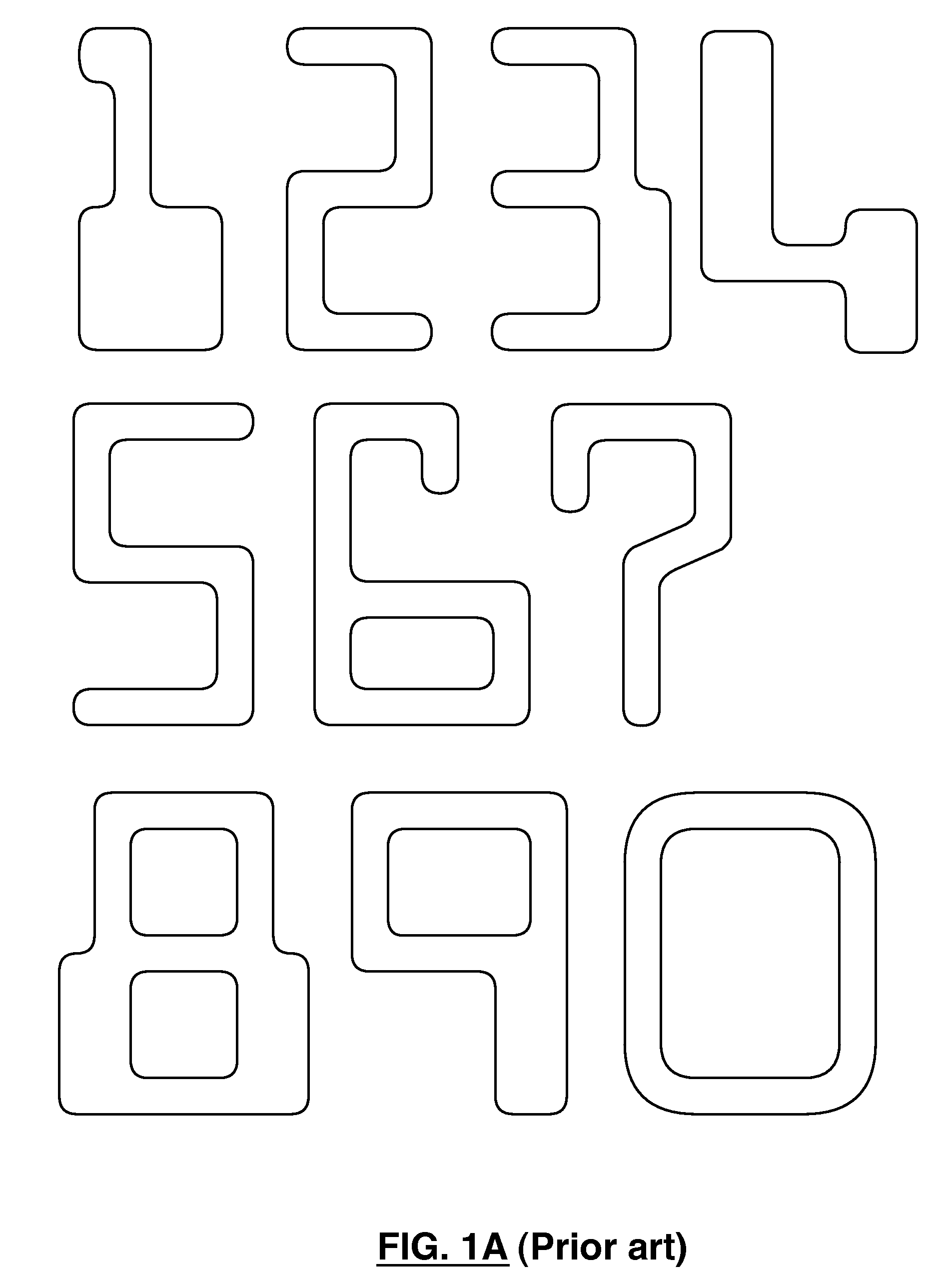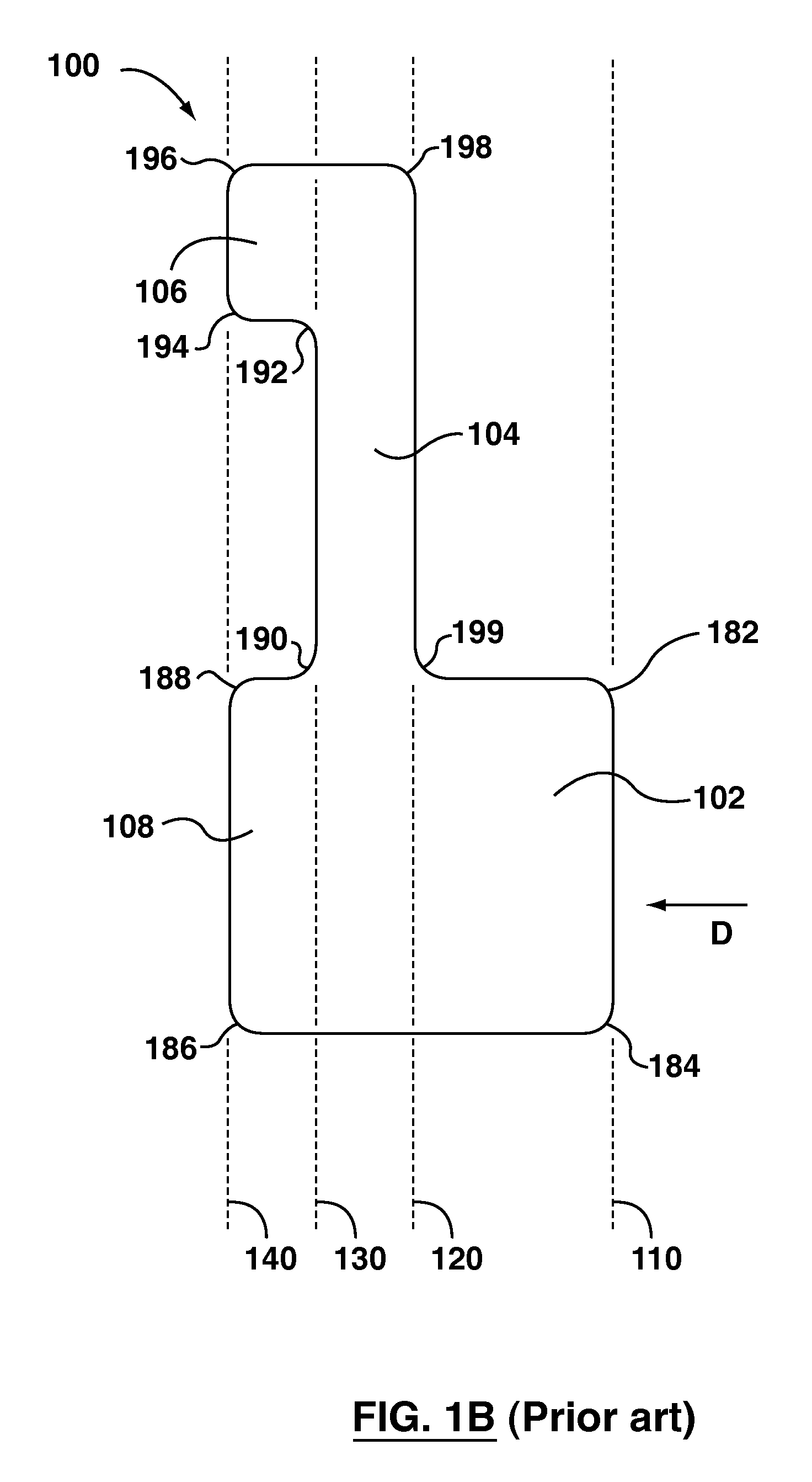Method for Inkjet Printing of E13B Magnetic Ink Character Recognition Characters and Substrate Having Such Characters Printed Thereon
a magnetic ink character recognition and inkjet printing technology, applied in the field of printing, can solve the problems of reducing the peak amplitude, character unrecognizable to the automated detection system, and affecting the magnetic acuity of the detection edge,
- Summary
- Abstract
- Description
- Claims
- Application Information
AI Technical Summary
Benefits of technology
Problems solved by technology
Method used
Image
Examples
Embodiment Construction
[0052]As indicated above, the automatic reading apparatus used to read E13B MICR characters relies on the position and amplitude of the peaks of the waveform generated by passing the read head over the E13B MICR characters to identify those characters. More particularly, each E13B MICR character should produce a waveform having a known pattern, and industry standards have been established for the position and amplitude of the peaks for each E13B character. As such, if the position or amplitude of a peak is not within the limits stated by the E13B standard, the character cannot be reliably identified.
[0053]As noted above, a particular peak is caused by a detection edge. A detection edge is a vertical (i.e. perpendicular to the read direction) edge representing a transition, in the read direction, from (a) no magnetic ink to some magnetic ink; (b) some magnetic ink to no magnetic ink; (c) some magnetic ink to more magnetic ink; or (d) some magnetic ink to less magnetic ink. It has bee...
PUM
 Login to View More
Login to View More Abstract
Description
Claims
Application Information
 Login to View More
Login to View More - R&D
- Intellectual Property
- Life Sciences
- Materials
- Tech Scout
- Unparalleled Data Quality
- Higher Quality Content
- 60% Fewer Hallucinations
Browse by: Latest US Patents, China's latest patents, Technical Efficacy Thesaurus, Application Domain, Technology Topic, Popular Technical Reports.
© 2025 PatSnap. All rights reserved.Legal|Privacy policy|Modern Slavery Act Transparency Statement|Sitemap|About US| Contact US: help@patsnap.com



